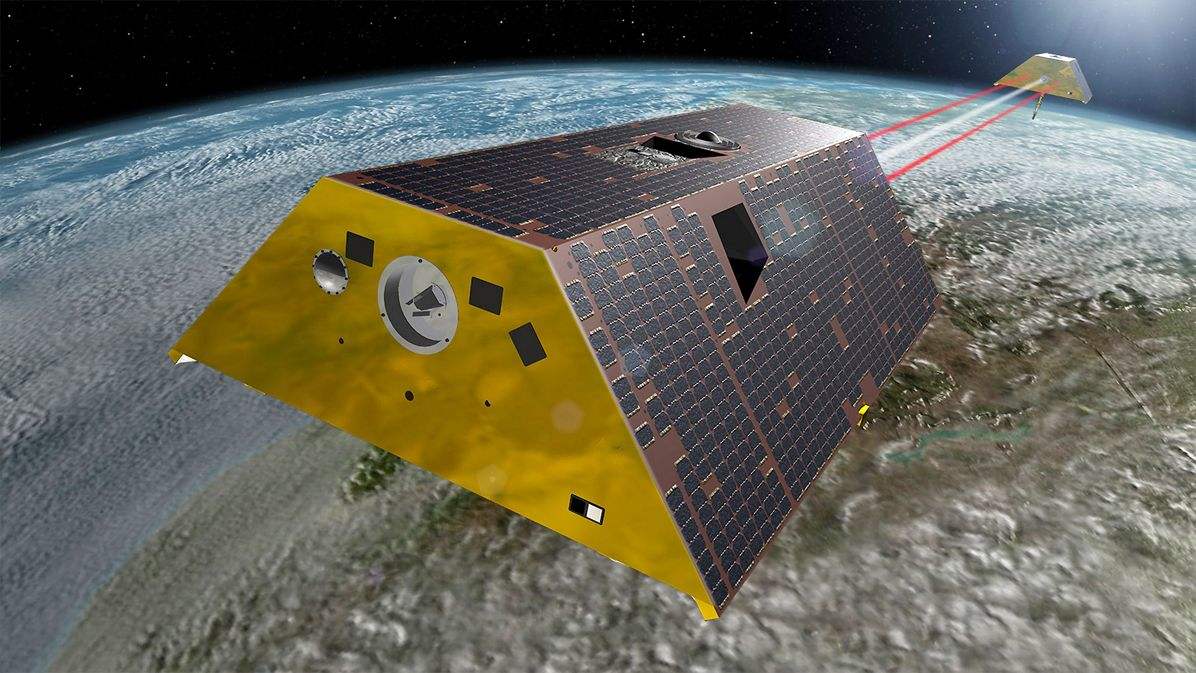The German-built gravity research satellites are on the way to Vandenberg Air Force Base in California for launch in spring 2018.
The twin GRACE-FO satellites — built and developed by Airbus in Friedrichshafen (Germany) — have set off on their journey to Vandenberg Air Force Base in California. Together with test equipment totalling around 45t, the gravity research satellites were loaded onto an air freighter at Munich airport and flown to the USA on 12th December.
GRACE-FO (Gravity Recovery and Climate Experiment Follow-on ) is a joint project between NASA’s Jet Propulsion Laboratory (JPL) based in Pasadena, California, and the German Research Centre for Geosciences (GFZ) in Potsdam.The satellites are scheduled for launch in spring 2018.
Both GRACE-FO research satellites are scheduled for launch in spring 2018, and will be placed in a polar orbit of around 500km and with a distance of 220km between them. The mission is planned to last at least five years.
The satellites will constantly measure the distance between each other to within a few microns using a microwave system built at JPL. Variations in Earth's gravity field result in miniscule variations in this distance. At the same time, a sensitive accelerometer, built at Onera in France, will account for non-gravitational effects, such as atmospheric drag and solar radiation.
The GRACE-FO satellites will also feature a new inter-satellite laser ranging instrument, developed in a German/American joint venture, which will be tested for use in future generations of satellites. In addition, each satellite will record up to 200 profiles per day of temperature distribution and water-vapour content in the atmosphere and the ionosphere to aid weather forecasting.

